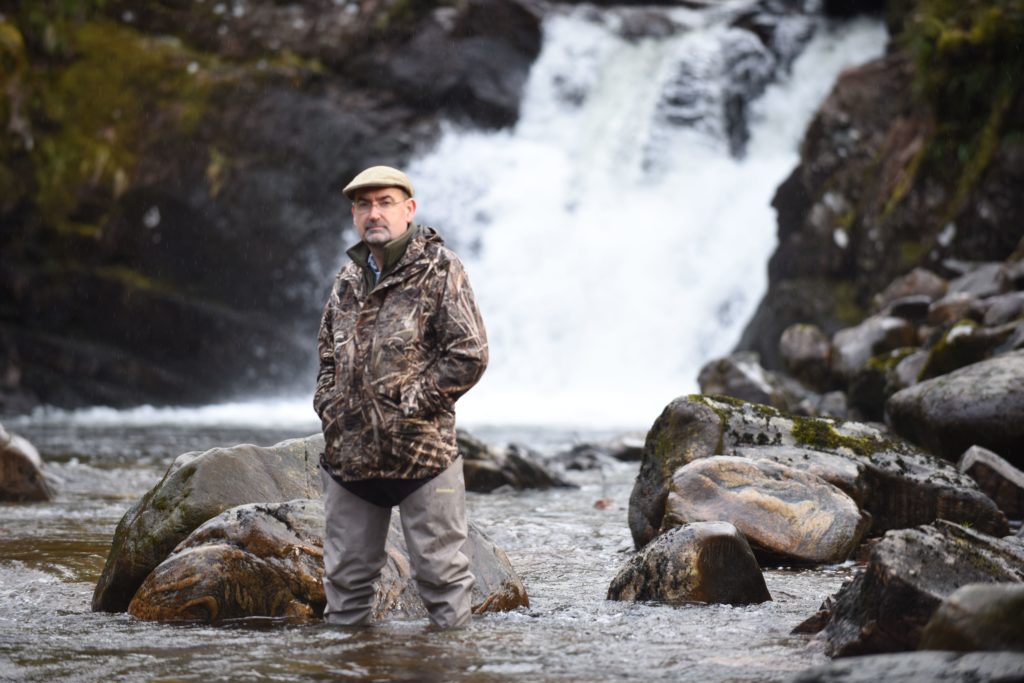Wild Fisheries Fund supports kelp programme

A series of Highland coastal kelp forests are among seven major environmental projects being supported by Scotland’s salmon farmers to help save iconic wild salmon and sea trout.
More than £118,000 has been granted to organisations this year through Salmon Scotland’s Wild Fisheries Fund to address long-term species decline.
The fund is part of a £1.5m commitment from Scotland’s salmon farmers to support the conservation, restoration, and sustainable management of wild fish numbers.
Atlantic Mariculture, seaweed farms based at Ardtoe on the Ardnamurchan Peninsula, has been awarded £43,102 to deploy specially designed “kelp shelters” for wild salmon and sea trout.
This will see five inshore forests created with seaweed grown on ropes along the west coast near the Rivers Shiel and Moidart – both key ecosystems.
Habitat loss and rising river temperatures primarily due to climate change have impacted on wild salmon and sea trout populations throughout the UK and all over the Scottish coastline.
Salmon farming companies, which only operate on the west coast, launched the fund to play their part finding solutions, engaging constructively with the wild fish sector and taking meaningful action to save wild salmon.
Previously called the Wild Salmonid Fund, more than £190,000 has already been invested since 2021 including a £35,000 grant to save the leaking Fincastle Dam on West Harris, helping preserve an important salmon fishery.
The fund is co-ordinated by fishery manager Jon Gibb, who is based in Fort William and has championed a constructive relationship between the farm-raised salmon sector and fisheries and angling groups.
The other six projects awarded funds this year are:
• Ayrshire Rivers Trust – £15,543 to undertake a restoration project that will aim to address riverbank erosion at the Netherton Burn.
• Loch Lomond Angling Improvement Association – £23,000 to fund habitat improvement at 12 sites along the River Fruin aiming to remove fish migration barriers, plant trees, and stabilise banks.
• Loch Lomond Fishery Trust – £12,381 to engage with young people in Garelochhead, providing practical workshops on fisheries management, bankside strengthening, and tree planting.
• River Eachaig Fishery Syndicate – £11,084 for ecological improvements to the riverbed at the Lamont pool on the Cowal Peninsula, in South Argyll.
• River Ruel Improvement Association – £10,000 to tackle erosion and minimise the entry of fine sediment into the river on the Cowal Peninsula through tree planting and fencing to mitigate livestock trampling.
• Obbe Fishery – £3,000 to repair an ageing South Harris sea dam wall, introduce an underwater camera for monitoring fish runs, and add and clean feeder streams spawning gravel.
Jon Gibb, co-ordinator of the Salmon Scotland wild fisheries fund, said: “The wild fisheries fund is a rare and exceptional opportunity for communities to access vital funds aimed at improving their local rivers and lochs.
“It’s fantastic to support a variety of innovative projects dedicated to conserving and enhancing the habitat, particularly for a species facing extinction in certain areas.
“Wild salmon are currently facing a deep and dire crisis, and the aquaculture sector can play a vital role in mitigating their decline.”
Kelp forests are known to provide food and security for many fish species, and it’s hoped that Atlantic Mariculture’s planned ‘shelters’ will offer crucial rest stops for migrating sea trout, benefiting the wider marine ecosystem.
They will deploy five 100-meter-long shelters, growing sustainable brown kelp species native to the area, providing a dense environment for sea trout, and repurposing historical salmon netting stations where possible.
The sites will be closely monitored throughout the two-year project using underwater drones, divers, cameras, and specialist sensor equipment.

Jon Gibb

